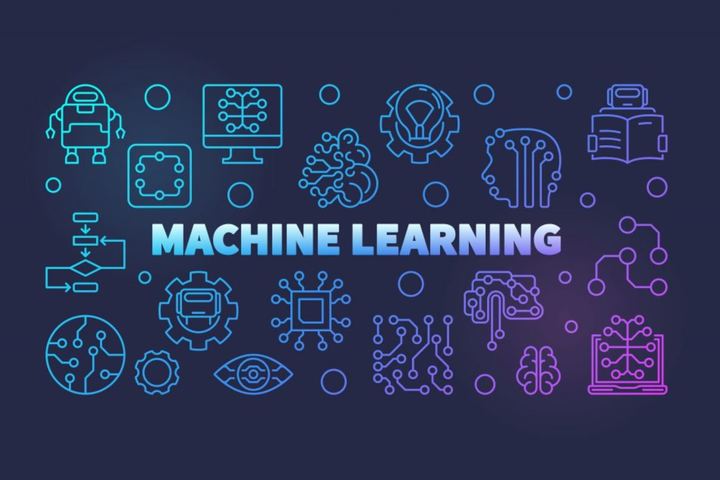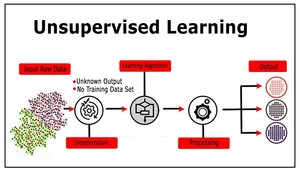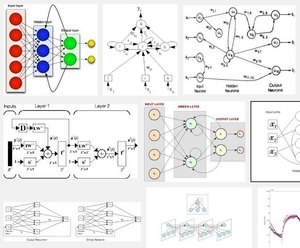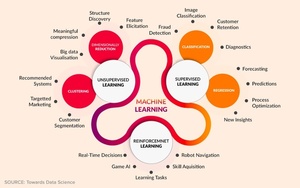Learn about Machine Learning, various learning modes in machine learning, neural networks, and how to apply machine learning to a problem.
Access Time: 1 Month
Course Details:
Introduction to Machine Learning and Supervised Learning
Learn what machine learning is and the fundamentals of supervised learning
- Introducing Machine Learning
- Simple Models
- Machine Learning in Python
- Practice: scikit-learn
Supervised Learning Models
Learn about more complicated supervised learning models and how to use them to solve problems
- describe the difference between classification and regression models and the use for each of them
- describe how decision trees can be applied to regression problems
- describe the CART decision tree learning algorithm and how it’s different from C4.5
- describe the random forests machine learning
- use scikit-learn to build a random forest model in Python
- describe the logistic regression model
- use scikit-learn to fit a logistic regression model
- describe support vector machine models
- describe how to use kernel methods with support vector machines to model more complex data
- use scikit-learn to train and support vector machines in Python
- describe the Naïve Bayes classifiers and how to train them
- use scikit-learn to fit a Naïve Bayes classifier in Python
- describe different supervised learning models in Python
Unsupervised Learning
Learn several different techniques in machine learning
- Introducing Unsupervised Learning
- Rule Association
- Cluster Analysis
- Anomaly Detection
- Dimensionality Reduction
- Practice: Unsupervised Learning
Neural Networks
Learn about neural networks and how to use them
- describe neural networks and their capabilities
- describe how different neural networks are structured
- describe how cost functions are used to train neural networks
- describe activation functions and list different types of commonly used activation functions
- describe feedforward neural networks and the intuition behind calculating gradients in neural networks
- describe how to use backpropagation for more efficient neural network training
- describe batch learning and why it makes neural network training easier
- describe TensorFlow and its high-level architecture
- set up TensorFlow for use on a CPU
- import data into TensorFlow using built-in data sources and external data sources
- build and train a single-layer neural network in TensorFlow
- build and train a multilayer neural network in TensorFlow
- describe neural networks, network layers, cost functions, activation functions, and gradient descent
Convolutional and Recurrent Neural Networks
Learn about convolutional and recurrent neural networks and the types of problems they can solve
- describe convolutional neural networks, how they are different from regular neural networks, and how they are used
- describe the high level architecture of convolutional neural networks
- describe how convolution layers are set in convolutional neural networks
- describe how pooling layers work in convolutional neural networks
- describe some training considerations for convolutional neural networks and how training can differ from traditional neural networks
- describe regularization and how it applies to convolutional neural networks
- implement and train a convolutional neural network in TensorFlow
- perform regularizing to a convolutional neural network in TensorFlow
- describe recurrent neural networks, how they are different from regular neural networks, and how they are used
- describe the architecture of a recurrent neural network
- implement an LSTM network in TensorFlow
- use RNNs to perform time-series analysis in TensorFlow
- use TensorFlow to create a CNN that classifies images
Applying Machine Learning
Learn how to evaluate and select machine learning models and apply machine learning to a problem
- describe the two main types of error in machine learning models and the tradeoff between them
- describe how to use cross-validation to show how generalized a model is
- describe cross-validation in Python to obtain strong evaluation scores
- describe different metrics that can be used to evaluate binary classification models
- describe different metrics that can be used to evaluate non-binary classification models
- describe common evaluation metrics for evaluating classification models
- describe different metrics that can be used to evaluate regression models
- describe how to use Python to calculate common evaluation methods
- describe AWS machine learning
- set up an AWS environment and import data sources
- create a model with AWS
- set training criteria with AWS and train a model
- define bias, variance, and tradeoffs
Course Fee: USD 75
Register Now








